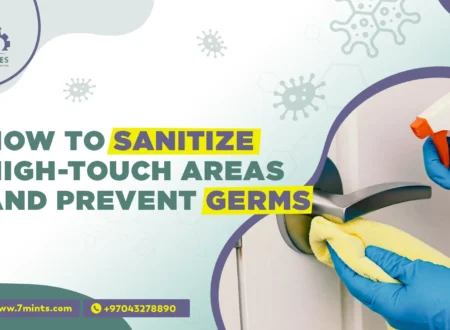Cross-contamination remains a major concern in home and professional kitchens alike. When harmful microorganisms, allergens, or foreign substances transfer from one surface, food item, or piece of equipment to another, unwanted transfer constitutes cross-contamination. Cross-contamination is one of the major causes of foodborne illnesses and should therefore understood and prevented to provide a safe kitchen environment.
Cross-Contamination
The complete transfer of harmful bacteria, viruses, or allergens is therefore called cross-contamination and occurs unintentionally from one substance or surface to another. This can happen at any stage of food handling production, processing, preparation, or distribution. The important sources of cross-contamination are:
- Food-to-Food Contact: There is contact between the raw product and ready-to-eat food contaminants. For example, if the juices of raw chicken drip onto salad greens, illness can occur.
- People-to-Food Contact: Contaminants can be introduced into food as a consequence of poor hygiene practices of food handlers. This includes not washing hands after handling raw ingredients or touching surfaces that might harbor bacteria.
Understanding these sources is essential for efficiently implementing prevention in any kitchen setting.
How Cross-Contamination Happens
1. Food-to-Food Cross-Contamination
Food-to-food cross-contamination is one key contributing step to the spread of harmful bacteria across fine kitchens. For example, raw meat placed on a shelf above the fruits and vegetables in the refrigerator would lead to contamination of those items if juices from the meat dripped down onto them.
2. Equipment-to-Food Cross-Contamination
Equipment-food cross-contamination occurs when food comes into contact with contaminated tools from the kitchen. For example, the same cutting board should not be used for raw chicken while preparing fresh produce without proper cleaning to avoid transferring pathogens from the meat onto the vegetables. Any knives and other utensils that have cut raw foods need to be properly washed before preparation for other items.
3. People-to-Food Cross-Contamination
People-to-food cross-contamination is often the result of very poor personal hygiene practices within food handlers. This can occur when people directly handle raw ingredients, such as poultry or eggs, and then touch foods subsequently without washing their hands in between, thus transferring bacteria.
4. Environmental Factors
Environmental factors are other contributors For instance, unsanitized kitchen counters can serve as an incubator for bacteria, further contaminating food placed on the counter afterward. Besides, cleaning agents stored poorly may contaminate if allowed to spill near food preparation areas.
Consequences of Cross-Contamination
Cross-contamination can bring in very serious health-related issues like:
- Foodborne Illnesses: Pathogens like Salmonella, E. coli, and Listeria in a cross-contaminated environment and are responsible for hundreds of outbreaks a year. Symptoms of foodborne illnesses range from mild gastrointestinal discomfort to, in some cases, severe health complications necessitating hospitalization.
- Allergic Reactions: Cross-contact with allergens such as peanuts or shellfish can also result in fatality in sensitized persons. Even very small quantities of these allergens can trigger severe symptoms in people suffering from allergies. Check out our latest blog post on The Secret to Cleaning Your Kitchen:
- Economic Losses: Cross-contamination is responsible for product recalls, lawsuits for health violations, and erosion of consumer confidence in food companies. This erosion of consumer confidence may take years to restore.
The consideration of these consequences illustrates the very real need for avoiding cross-contamination in domestic kitchens as well as in commercial establishments.
Preventing Cross-Contamination
Cross-contamination prevention entails a combination of procedures, hygiene, equipment control, and food storage.
1. Personal Hygiene
This first barrier includes personal hygiene in any kitchen setting. Food handlers must vigorously wash their hands with soap prior to handling any food and after having contact with any raw food, be it meat or eggs. It is also important to wash one’s hands after using the bathroom or touching surfaces potentially contaminated by bacteria (like door handles).
2. Food Storage
Food storage plays a very important role in preventing cross-contamination from raw foods to cooked ones. Raw foods must always stores away from ready-to-eat items in the refrigerator, preferably on different shelves or in separate sealed containers to prevent juices from leaking out. When sharing refrigerator space, raw meats always belong on the bottom shelf so that any drips do not contaminate other foods stored below them.
3. Equipment Control
Using separate equipment for different types of food greatly reduces any chance of cross-contamination from equipment contact. Color-coded cutting boards (such as red for meats and green for vegetables) remind the cooks which board is used for what type of food item; this simple practice prevents mixing raw and cooked ingredients inadvertently during the preparation procedures.
4. Cooking Practices
Cooking food to the right internal temperature is the critical killer for all harmful bacteria present in raw materials before consumption. Every kind of meat has its own cooking temperature for safety; for example:
Poultry has an internal temperature of 165°F (74°C).
Fish should cook to about 145°F (63°C).
Using a digital thermometer ensures accuracy during cooking; this simple tool helps verify that meats are cooked properly before serving.
Case Study: A Day in the Kitchen
Roberto’s trying to prepare dinner at home.
- He cuts raw chicken on a wooden cutting board but fails to wash it and proceeds to cut vegetables on it-the error allows the bacteria on the chicken to unduly contaminate his fresh produce.
- Some juices from the raw chicken hit the grill while he was grilling the chicken outside. A few splatters onto some utensils that he uses later; therefore, he is transferring the same bacteria onto his cooked vegetables.
- Roberto does not wash his hands after handling raw chicken before peeling carrots into a salad; this little act could make him very ill, as he is now transferring pathogens directly onto something meant for human consumption!
In the scenario described above, pathogenic bacteria from raw poultry contaminated multiple surfaces (cutting board/utensils) and different types of food (carrots), significantly increasing the risk levels of any foodborne illness!
Conclusion
However, cross-contamination is with awareness and observance of proper food safety codes of conduct! Whether at home or in a professional kitchen, being proactive will significantly reduce risks in scenarios involving hygiene standards, separation of raw and cooked items, dedicated equipment, and cooking at safe temperatures.
By creating a culture of cleanliness and vigilance within your own personal practices of cooking, Contact us as you not only have good meals but also safeguard the health and safety interests of all those who partake in what you create!










2 Comments
Comments are closed.